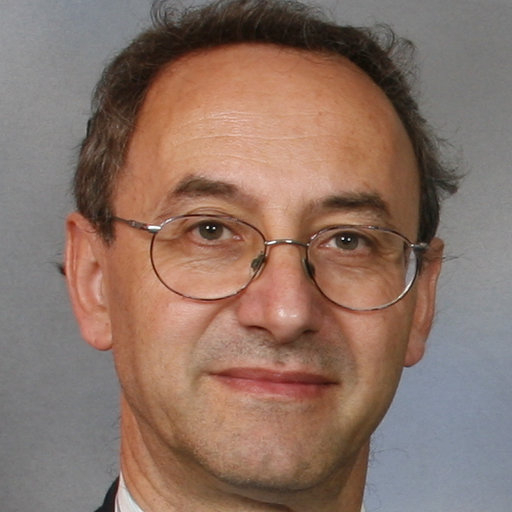News

In loving memory of Ellis Martin Gartner
Obituary**
Ellis Gartner, 68, Visiting Professor in Civil and Environmental Engineering at Imperial College, London and prominent cement scientist, passed away on February 13 in Lyon, France. He made many contributions to the field of cement and concrete and was the senior associate editor on the journal Cement and Concrete Research for the last 14 years. He was an inspiring friend and mentor to many of us; he will be sorely missed.
Ellis was born on January 18th, 1950, in London, to a family of Eastern European extraction. He completed his MA and then PhD in Physical Chemistry at Cambridge University, UK. He then took up a post as Higher Scientific Officer at the UK Building Research Establishment. At that time, the early 1970s, there was a lot of concern about the provision of aggregates for construction. At the same time industries such as coal mining, iron and steel production, and the mining of slate and china clay were producing very large amounts of waste. Ellis contributed to finding uses for these wastes in the construction industry. One memorable contribution was to design and build a pilot scale fluidized-bed furnace to demonstrate how slate waste could be expanded to make a lightweight aggregate.
In 1977, he moved to the Portland Cement Association in Skokie, Illinois, USA, where he worked on the chemistry of cement manufacture and cement hydration. One landmark contribution from this time was on the influence of sulfate source on Portland cement hydration.
In 1985, Ellis joined W.R. Grace at the Washington Research Center in Columbia, Maryland (USA). He led the cement additive and concrete admixture research effort as a Senior Research Scientist and a Research Manager. During his tenure, he was responsible for the discovery and understanding of many new technologies, including higher molecular weight alkanolamines as strength enhancers for cement[1], polycarboxylate ether-based high range water reducers, and shrinkage control agents for concrete. The continual global success of these transformational technologies is the direct result of the scientific rigor Ellis exercised during the development of these products. He also hired, mentored, and coached an entire generation of scientists that have had an impact within and outside of Grace and GCP Applied Technologies.
In 1996, Ellis moved back across the Atlantic, to join Lafarge Central Research (LCR) in Lyon, France, where he became head of the newly created organic-mineral Interaction team. For him there was no frontier between mineral chemistry and organic chemistry on the contrary, he made a specialty of the organo-mineral interactions, leading key research projects in this area. The development of admixtures greatly benefited from his brilliant scientific approach. Unfortunately, little of this work was published as it was considered of great commercial importance in the control of concrete quality. This work also led to a strong collaboration with Japanese colleagues at Taiheiyo cement.
He became Principle Scientist and then Scientific Director for Chemisty at LCR where he then focused on the development of low CO2 clinkers. His contribution in this field was outstanding. Not only did he work on internal projects in Lafarge leading to the development of the Aether cement, but he published several seminal papers giving an in-depth analysis of the possibility for CO2 reduction given the limitations of the geology of the earth. These contributions drew on his incredibly depth of knowledge on both cement production and hydration chemistry. They include key note papers at the last 3 International Conferences on Cement Chemistry and most recently he was one of the leading authors on a report from the United Nations Environment Program on Eco Efficient cements: Potential, economically viable solutions for a low-CO2 based cement based materials industry. His work here will continue to be very influential.
In parallel to his work in the industry, Ellis pursued his passion for Cement Chemistry, particularly in the field of hydration. His papers on C-S-H growth in 1995[2] and the role of water in the formation of C-S- published just last year[3] demonstrate his ability to come up with completely new ideas, which will stimulate research in this area for many years to come. He also contributed by organizing conferences and workshops, where he built many bridges with experts from other disciplines. In this respect, he was also a lynchpin of the Nanocem network which brings together industry and academia for fundamental research into cementitious materials. He had a knack of getting to the heart of a problem and outlining what had to be done to solve it. His judgements were always influenced by a deep understanding of the physical chemistry of cements as well as the commercial practicality of new inventions and discoveries. His wisdom will be missed.
Towards the end of his career with Lafarge and into his retirement, he took up a post as visiting Professor at Imperial College, London. Here he gave lectures and supervised students. He was very popular with students, dedicated and incredibly generous with this time and knowledge.
Ellis was an inspiration to many of us, and an excellent mentor to many younger scientists. He had a great sense of, very British, humor with an ability to make plays on words across both English and French. He had friends and colleagues across many cultures: “English style, Japanese style, French style, American Style, whatever it did not matter, we just had good time”. He is survived by his wife, Noriko and children, Maya, Yuma and Abi.
[1] Gartner, E., Myers, D, Influence of Tertiary Alkanolamines on Portland Cement Hydration, Journal of the American Ceramic Society 76(6), pp. 1521-1530, 1993
[2] E.M. Gartner, A proposed mechanism for the growth of C-S-H during the hydration of tricalcium silicate, Cement and Concrete Research 27(5), pp. 665-672, 1995
[3] Gartner, E., Maruyama, I., Chen, J., A new model for the C-S-H phase formed during the hydration of Portland cements, Cement and Concrete Research, 97, pp. 95-106 2017
**This orbituary will also be published in Cement and Concrete Research. Thanks to Karen Scrivener for authorizing us to publish it.














No comment
Log in to post comment. Log in.